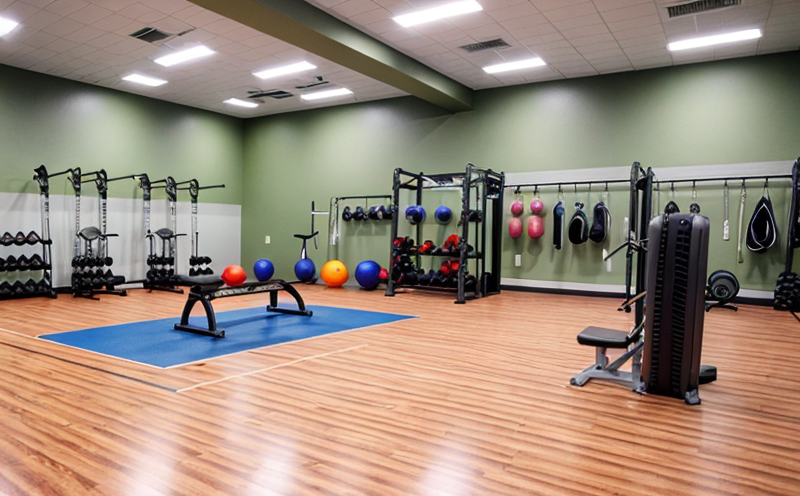Heart Rate Monitor Accuracy Testing in Fitness Equipment
The heart rate monitor is a critical component of modern fitness equipment, providing users with essential real-time feedback during workouts. Ensuring that these monitors are accurate and reliable is paramount to maintaining user trust and compliance with safety standards. This testing service focuses on verifying the accuracy of heart rate monitors used in various forms of exercise equipment such as treadmills, elliptical trainers, stationary bikes, and other fitness machines.
The importance of this test cannot be overstated, especially considering its role in personal health management and workout planning. Inaccurate readings can lead to misinformation about one's performance and health status, potentially impacting the effectiveness of the training regimen or even posing risks to user safety. Compliance with international standards ensures that these devices meet global regulatory requirements.
Testing procedures typically involve comparing the heart rate monitor’s output against a known standard, such as electrocardiogram (ECG) readings under controlled conditions. This process involves setting up the equipment in a lab environment where both the fitness machine and the user are monitored closely to ensure consistent results. The goal is to determine whether the heart rate monitor consistently provides accurate readings across different intensities of exercise.
Compliance with international standards such as ISO 8067, which covers general requirements for fitness equipment, and specific guidelines from organizations like ANSI or CEN, ensures that the testing aligns with best practices recognized worldwide. This not only helps manufacturers meet regulatory expectations but also enhances brand reputation by demonstrating commitment to quality and safety.
The accuracy of heart rate monitors is tested under various conditions, including different user weights, exercise intensities, and even in extreme environmental conditions if applicable. These tests help identify any potential discrepancies that could arise due to variations in design or manufacturing processes. Additionally, regular calibration checks are performed to ensure long-term reliability.
For quality managers and compliance officers responsible for ensuring product safety and performance, this service provides a critical tool for maintaining adherence to stringent industry standards. R&D engineers can benefit from understanding the nuances of heart rate monitor accuracy testing, allowing them to refine designs based on empirical data. Procurement teams, too, find value in knowing that their suppliers are committed to producing accurate and reliable equipment.
By investing in this service, organizations demonstrate a commitment to delivering high-quality products that meet or exceed expectations set by international standards. This proactive approach fosters trust among consumers while also protecting the brand’s reputation against potential legal challenges stemming from inaccurate product claims.
Why It Matters
The accuracy of heart rate monitors in fitness equipment is not just a technical detail; it has significant implications for user health and safety. When users rely on these devices to guide their exercise routines, they expect reliable feedback about how hard they are working and whether their efforts are aligned with their goals. If the monitor provides incorrect information, it could lead to overexertion or insufficient effort, both of which pose risks.
From a legal standpoint, compliance with international standards like ISO 8067 is essential for avoiding potential liability issues. Non-compliance can result in product recalls and financial penalties, not to mention damage to the company’s reputation. Regular testing ensures that products remain compliant throughout their lifecycle, protecting both manufacturers and end-users.
For consumers, accuracy translates into better workout experiences. Knowing that they are getting honest feedback about their heart rate helps them make more informed decisions about their fitness journey. This can lead to improved outcomes such as weight loss, increased stamina, or simply feeling healthier overall.
In summary, ensuring accurate heart rate monitor performance is crucial for maintaining user trust, compliance with regulations, and overall product quality. It serves as a cornerstone of responsible manufacturing practices that benefit all stakeholders involved in the fitness industry.
Why Choose This Test
- Ensures compliance with international standards such as ISO 8067.
- Identifies discrepancies early to avoid costly recalls.
- Promotes user trust and satisfaction through reliable performance data.
- Aids in regulatory compliance to mitigate legal risks.
- Improves product quality by identifying design flaws or manufacturing inconsistencies.
- Facilitates continuous improvement of fitness equipment designs based on empirical evidence.
Choosing this test is a strategic move for any organization looking to maintain a competitive edge in the highly regulated and consumer-focused fitness industry. It demonstrates a commitment to excellence, fostering long-term relationships with customers and stakeholders alike.
International Acceptance and Recognition
- The heart rate monitor accuracy test is widely accepted across Europe through EN standards.
- In the United States, compliance with ANSI guidelines ensures broad acceptance within the market.
- ISO 8067 is globally recognized as a benchmark for fitness equipment safety and performance.
This widespread acceptance means that products tested meet stringent quality criteria, making them suitable for export to diverse markets. Manufacturers benefit from reduced barriers to entry in international sales, enhancing their global presence and competitiveness.
The global recognition of these standards also signals a commitment to best practices, which can positively impact brand image and customer loyalty. By adhering to these standards, companies position themselves as leaders in innovation and quality assurance, attracting both domestic and international customers who value reliability and safety.





